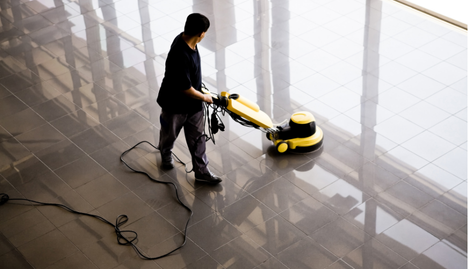Cleaning for Allergy Sufferers to Reduce Indoor Allergens
Millions of people struggle to experience a true sense of comfort in their own homes. The reason? Their indoor environment is home to allergens that cause long-lasting sneezing, itchy eyes, and respiratory problems.
Indoor allergens such as dust mites, pet hair, mould, and pollen can cause these symptoms and lead to a whole host of associated health issues. The solution to reducing indoor allergens is very simple, and here we're going to explore the cleaning routine that will promote better air quality and help allergy sufferers be more comfortable in their environments.
Your Tool Kit for an Allergy-Friendly Clean
Your cleaning success depends on having access to suitable and effective equipment and solutions. Standard cleaning methods often end up making the air worse for allergy sufferers since they only push dust and dirt from one place to another. Here are some basics you should have in your tool-kit:
HEPA Filter Vacuum: A HEPA filter removes dust mites, pet dander, pollen, and dust mite droppings from the air. The design of HEPA filters allows them to catch these tiny particles before they can re-enter the air that people breathe.
Microfibre Cloths: Ditch the feather duster. Damp microfibre cloths function better than feather dusters do, because they catch dust particles instead of spreading them.
Protective Gear: When cleaning, it's vital to put on protective gear. This prevents the inhalation of allergens, which you are actively removing. Wearing gloves protects your skin from irritation caused by cleaning substances and allergens.
A Room-by-Room Battle Plan
Allergens tend to accumulate in specific areas of the home, so targeting these zones ensures your cleaning efforts are focused where they're needed most.
The Bedroom: The Allergen Hotspot
The bedroom should be your top priority when trying to eliminate triggers that are affecting your client's ability to breathe and stay healthy. The bedroom is the place where we spend most of our time when we're at home, and it's the place where dust mites find the perfect combination of warmth and humidity. Bedding is also their primary source of food, so it's essential to get rid of those dead skin cells and cut off their ability to thrive and reproduce. Here are some tips for doing just that:
Wash Bedding Weekly: Wash all bedding in hot water at 55°C or higher each week to eliminate dust mites and remove allergens effectively.
Use Protectors: All mattresses and pillows should be covered with zipped allergen-proof covers. These will be the first line of defence in preventing pillows, sheets and mattresses from becoming a breeding ground for dust mites.
Declutter: Remove all unnecessary items from the bedroom space (may include books and decorations like lamps). Storage bins with lids should be used instead of open shelves for storing items.
Living Areas: Tackling Soft Furnishings and Floors
Next up is the living area and all of the soft furnishings that are in it. Here are some tips to keep in mind when tackling carpets and couches:
Vacuum Regularly: Use a vacuum with a HEPA filter to clean carpets and upholstered furniture at least once a week — ideally twice — to help reduce allergens effectively.
Advise your Client to Consider Hard Flooring: Talk to your client about their flooring choices and why carpet might be a huge contributor to their allergy issues. Advise them to consider replacing their carpets with other flooring options, such as wood, tile, or linoleum, as they're much easier to keep clean and free of dust. Area rugs with washable surfaces could be used for added comfort if they wish to keep the flooring soft.
Don't Forget About Curtains and Blinds: Curtains and blinds trap dust, pollen, and allergens that can recirculate into the air, affecting indoor air quality. Regular cleaning helps reduce allergy triggers and keeps the air healthier. It's best to use a vacuum with a brush or upholstery attachment for weekly maintenance, and wash curtains in hot water or use a steam cleaner when needed. For blinds, wipe with a microfibre cloth or clean with a mild detergent or specialised solution.
Kitchen and Bathrooms: Controlling Moisture and Mould
In kitchens, dust can collect on top of cabinets, refrigerator coils, light fixtures, and inside vents. In bathrooms, it often builds up around exhaust fans, behind toilets, and in corners where moisture and dust combine. Both rooms can also trap dust in window sills, blinds, and under sinks, where clutter and poor airflow allow particles to settle. Here are some tips to keep these rooms free of allergens:
Ensure Good Ventilation: Exhaust fans in bathrooms and kitchens help reduce humidity and prevent moisture buildup. Without proper airflow, damp conditions can lead to the growth of mould and mildew — both strong triggers for allergies. It's a good idea to talk to your client about the importance of good air ventilation and advise them on some steps they can take to prevent a buildup of moisture in these rooms.
Deep Clean Surfaces: Thoroughly and regularly scrub tubs, sinks, and tiles using mould-inhibiting cleaning products to remove buildup and hidden grime. These damp surfaces are hotspots for mould and mildew, which can worsen allergies and impact respiratory health.
Cleaning Solutions to Reduce Indoor Allergens
Big Clean offers a wide range of cleaning products that are safe and gentle for those who suffer from allergies, asthma and skin irritations. Check out our collection today and reach out to us if you have any questions about reducing indoor allergens with specialised products and equipment.







